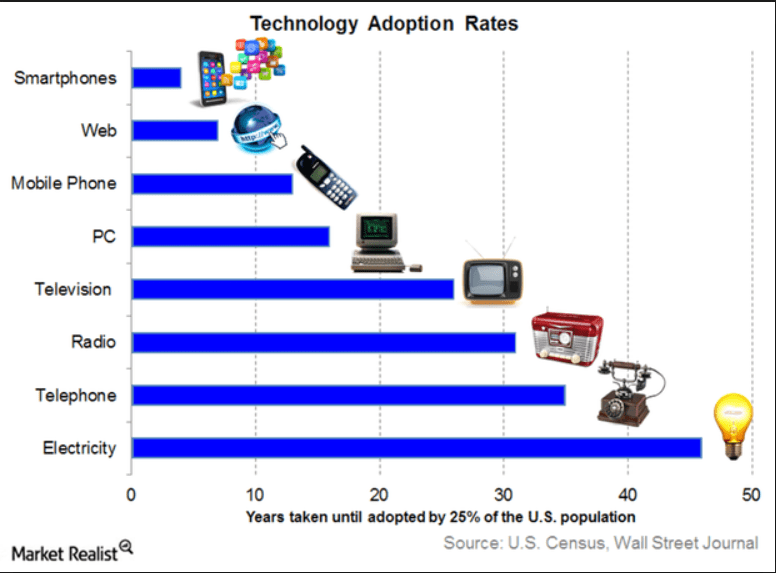
Published by: Vanessa Ferguson
The way in which we work is changing. Employees want to work in the same way that they live outside of the office – on-the-go, fast, easy access, mobile, touch friendly, intuitive, simple, eye catchy. We now live in a world where even small children know how to navigate a smart phone. we are becoming increasingly demanding for easy access to information no matter where we are and what time it is. Employees are no longer OK with using clunky, outdated systems and processes when it comes to the way they work. Replicating the smart phone experience for employee portals, intranets, extranets, store portals etc. has never been so easy, in fact, there are tools available to help you do just that. The benefits? Employees will adopt new technology much more readily.
Why User Adoption Matters
User adoption is a term that we love to use. When user adoption is high, employees have embraced new technologies, and are using new and improved systems and processes to go about their daily tasks. Yet too often, this is not the case.
When a business decides to implement a new platform to the workplace, typically there has been a lot of thought, discussion, time and effort that goes into this process, not to mention financial investment. Often individuals involved in rolling out a new technology to the business are excited about new and improved systems and processes. They understand that the new way will allow for greater productivity, communication, collaboration and overall business efficiency.

Source: Yahoo Finance
The Risks of Low User Adoption
End users excluded from decisions about new technology often become unhappy when forced to learn entirely new ways of working. Initial reactions to these unfamiliar systems can be a mix of apprehension, fear, isolation, and general negativity. These users worry about the time it will take to be trained and adapt to the new processes. Unsurprisingly, negative reactions directly lead to poor user adoption. So, what are the risks associated with low adoption rates?
Aside from the obvious wasted financial investment into a new platform, organizations run the risk of having their data compromised when user adoption is low. This is because employees always find a workaround when it comes to locating and storing data, and often will revert back to the old way of doing things, which may not be secure. For example, rather than using a highly functional and secure platform like Microsoft SharePoint for document management, employees may choose to email documents or share information via other third party file share platforms.
Secondly, low user adoption is related to lost productivity. When employees do not use the tools available to them they often find themselves searching for information via email and other time consuming channels. Individuals may revert to manual process for file access and storage, which take time and do not allow for efficient workflow.
When Employee Engagement Is At Risk
Employee engagement is also at risk when user adoption is poor. If employees avoid new a platform that hosts important announcements and information, they will likely feel disconnected from their peers and the broader organization. When employees feel that systems that they are required to work with are outdated or difficult to use. They often associate these perceptions to other areas of the business. When certain individuals have negative impressions about the time it takes to perform their daily tasks, a toxicity can spread amongst employees. Complaints about systems and processes tend to go viral and negativity breeds negativity. On the flip side, happier users are more engaged employees who can easily communicate and collaborate with their colleagues.
Creating a Culture of User Adoption
To foster a culture of user adoption, prioritize user experience by designing technology that is visually appealing, mobile-friendly, and intuitive. This will make the system easier to learn and navigate. Invest in clear and comprehensive training to empower employees to use the new technology effectively. Finally, involve end-users in the decision-making process from the beginning. This will ensure the new technology addresses their needs and concerns, leading to greater acceptance and adoption.
When making decisions about rolling out new technology to an organization it is very important to consider the end users and how they will react to a new way of doing things. Users will be happier with a system that looks good, is brand consistent, intuitive, and mobile friendly. Find out how to deliver this to your employees.





